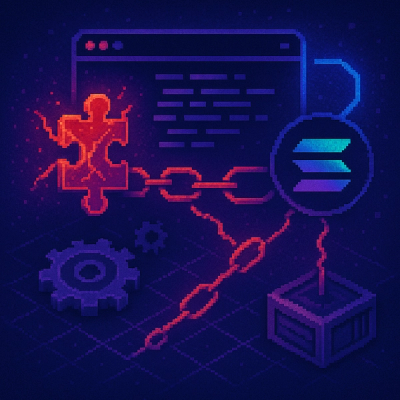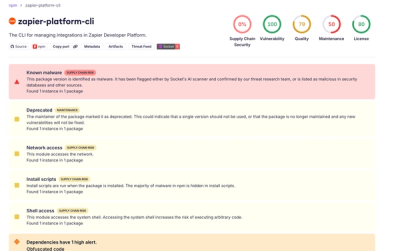doc





Get usage and health data about your Node.js process.
doc is a small module that helps you collect health metrics about your Node.js process.
It does that by using only the API available on Node itself (no native dependencies).
It doesn't have any ties with an APM platform, so you are free to use anything you want for that purpose.
Its API lets you access both computed and raw values, where possible.
Installation
latest stable version
$ npm i @dnlup/doc
latest development version
$ npm i @dnlup/doc@next
Usage
You can import the module by using either CommonJS or ESM.
By default doc returns a Sampler instance that collects metrics about cpu, memory usage, event loop delay and event loop utilization.
Importing with CommonJS
const doc = require('@dnlup/doc')
const sampler = doc()
sampler.on('sample', () => {
doStuffWithCpuUsage(sampler.cpu.usage)
doStuffWithMemoryUsage(sampler.memory)
doStuffWithEventLoopDelay(sampler.eventLoopDelay.computed)
doStuffWithEventLoopUtilization(sampler.eventLoopUtilization.utilization)
})
Importing with ESM
import doc from '@dnlup/doc'
const sampler = doc()
sampler.on('sample', () => {
doStuffWithCpuUsage(sampler.cpu.usage)
doStuffWithMemoryUsage(sampler.memory)
doStuffWithEventLoopDelay(sampler.eventLoopDelay.computed)
doStuffWithEventLoopUtilization(sampler.eventLoopUtilization.utilization)
})
Note
A Sampler holds a snapshot of the metrics taken at the specified sample interval.
This behavior makes the instance stateful. On every tick, a new snapshot will overwrite the previous one.
Enable/disable metrics collection
You can disable the metrics that you don't need.
const doc = require('@dnlup/doc')
const sampler = doc({ collect: { cpu: false, memory: false } })
sampler.on('sample', () => {
doStuffWithEventLoopDelay(sampler.eventLoopDelay.computed)
doStuffWithEventLoopUtilization(sampler.eventLoopUtilization.utilization)
})
You can enable more metrics if you need them.
Garbage collection
const doc = require('@dnlup/doc')
const sampler = doc({ collect: { gc: true } })
sampler.on('sample', () => {
doStuffWithCpuUsage(sampler.cpu.usage)
doStuffWithMemoryUsage(sampler.memory)
doStuffWithEventLoopDelay(sampler.eventLoopDelay.computed)
doStuffWithEventLoopUtilization(sampler.eventLoopUtilization.utilization)
doStuffWithGarbageCollectionDuration(sampler.gc.pause)
})
Active handles
const doc = require('@dnlup/doc')
const sampler = doc({ collect: { activeHandles: true } })
sampler.on('sample', () => {
doStuffWithCpuUsage(sampler.cpu.usage)
doStuffWithMemoryUsage(sampler.memory)
doStuffWithEventLoopDelay(sampler.eventLoopDelay.computed)
doStuffWithEventLoopUtilization(sampler.eventLoopUtilization.utilization)
doStuffWithActiveHandles(sampler.activeHandles)
})
Examples
You can find more examples in the examples folder.
API
doc([options])
It creates a metrics Sampler instance with the given options.
Class: doc.Sampler
Metrics sampler.
It collects the selected metrics at a regular interval. A Sampler instance is stateful so, on each tick,
only the values of the last sample are available. Each time the sampler emits the sample event, it will overwrite the previous one.
new doc.Sampler([options])
options <Object>
sampleInterval <number>: sample interval (ms) to get a sample. On each sampleInterval ms a sample event is emitted. Default: 1000 Under the hood the package uses monitorEventLoopDelay to track the event loop delay.autoStart <boolean>: start automatically to collect metrics. Default: true.unref <boolean>: unref the timer used to schedule the sampling interval. Default: true.gcOptions <Object>: Garbage collection options
eventLoopDelayOptions <Object>: Options to setup monitorEventLoopDelay. Default: { resolution: 10 }collect <Object>: enable/disable the collection of specific metrics.
cpu <boolean>: enable cpu metric. Default: true.resourceUsage <boolean>: enable resourceUsage metric. Default: false.eventLoopDelay <boolean>: enable eventLoopDelay metric. Default: true.eventLoopUtilization <boolean>: enable eventLoopUtilization metric. Default: true on Node version 12.19.0 and newer.memory <boolean>: enable memory metric. Default: true.gc <boolean>: enable garbage collection metric. Default: false.activeHandles <boolean>: enable active handles collection metric. Default: false.
If options.collect.resourceUsage is set to true, options.collect.cpu will be set to false because the cpu metric is already available in the resource usage metric.
Event: 'sample'
Emitted every sampleInterval, it signals that new data the sampler has collected new data.
sampler.start()
Start collecting metrics.
sampler.stop()
Stop collecting metrics.
sampler.cpu
Resource usage metric instance.
sampler.resourceUsage
Resource usage metric instance.
sampler.eventLoopDelay
Event loop delay metric instance.
sampler.eventLoopUtilization
Event loop utilization metric instance.
sampler.gc
Garbage collector metric instance.
sampler.activeHandles
Number of active handles returned by process._getActiveHandles().
sampler.memory
Object returned by process.memoryUsage().
Class: CpuMetric
It exposes both computed and raw values of the cpu usage.
cpuMetric.usage
Cpu usage in percentage.
cpuMetric.raw
Raw value returned by process.cpuUsage().
Class: ResourceUsageMetric
It exposes both computed and raw values of the process resource usage.
resourceUsage.cpu
Cpu usage in percentage.
resourceUsage.raw
Raw value returned by process.resourceUsage().
Class: EventLoopDelayMetric
It exposes both computed and raw values about the event loop delay.
eventLoopDelay.computed
Event loop delay in milliseconds. It computes this value using the mean of the Histogram instance.
eventLoopDelay.raw
Exposes the Histogram instance.
eventLoopDelay.compute(raw)
raw <number> The raw value obtained using the Histogram API.- Returns
<number> The computed delay value.
Class: EventLoopUtilizationMetric
It exposes statistics about the event loop utilization.
eventLoopUtilization.idle
The idle value in the object returned by performance.eventLoopUtilization() during the sampleInterval window.
eventLoopUtilization.active
The active value in the object returned by performance.eventLoopUtilization() during the sampleInterval window.
eventLoopUtilization.utilization
The utilization value in the object returned by performance.eventLoopUtilization() during the sampleInterval window.
eventLoopUtilization.raw
Raw value returned by performance.eventLoopUtilization() during the sampleInterval window.
Class: GCMetric
It exposes the garbage collector activity statistics in the specified sampleInterval using hdr histograms.
new GCMetric(options)
options <object>: Configuration options
gcMetric.pause
It tracks the global activity of the garbage collector.
gcMetric.major
The activity of the operation of type major. It's present only if GCMetric has been created with the option aggregate equal to true.
See performanceEntry.kind.
gcMetric.minor
The activity of the operation of type minor. It's present only if GCMetric has been created with the option aggregate equal to true.
See performanceEntry.kind.
gcMetric.incremental
The activity of the operation of type incremental. It's present only if GCMetric has been created with the option aggregate equal to true.
See performanceEntry.kind.
gcMetric.weakCb
The activity of the operation of type weakCb. It's present only if GCMetric has been created with the option aggregate equal to true.
See performanceEntry.kind.
Class: GCEntry
It contains garbage collection data, represented with an histogram. All timing values are expressed in nanoseconds.
new GCEntry()
The initialization doesn't require options. It is created internally by a GCMetric.
gcEntry.totalDuration
It is the total time of the entry in nanoseconds.
gcEntry.totalCount
It is the total number of operations counted.
gcEntry.mean
It is the mean value of the entry in nanoseconds.
gcEntry.max
It is the maximum value of the entry in nanoseconds.
gcEntry.min
It is the minimum value of the entry in nanoseconds.
gcEntry.stdDeviation
It is the standard deviation of the entry in nanoseconds.
gcEntry.getPercentile(percentile)
percentile <number>: Get a percentile from the histogram.- Returns
<number> The percentile
Class: GCAggregatedEntry
It extends GCEntry and contains garbage collection data plus the flags associated with it (see https://nodejs.org/dist/latest-v18.x/docs/api/perf_hooks.html#performanceentryflags).
new GCAggregatedEntry()
The initialization doesn't require options. It is created internally by a GCMetric.
gcAggregatedEntry.flags
This object contains the various histograms of each flag.
gcAggregatedEntry.flags.no
gcAggregatedEntry.flags.constructRetained
gcAggregatedEntry.flags.forced
gcAggregatedEntry.flags.synchronousPhantomProcessing
gcAggregatedEntry.flags.allAvailableGarbage
gcAggregatedEntry.flags.allExternalMemory
gcAggregatedEntry.flags.scheduleIdle
doc.errors
In the errors object are exported all the custom errors used by the module.
InvalidArgumentError | DOC_ERR_INVALID_ARG | An invalid option or argument was used |
NotSupportedError | DOC_ERR_NOT_SUPPORTED | A metric is not supported on the Node.js version used |
Diagnostics Channel support
Node diagnostics channel are supported.
const diagnosticsChannel = require('diagnostics_channel')
const doc = require('@dnlup/doc)
diagnosticsChannel.subscribe(doc.constants.DOC_CHANNEL, s => {
console.log('A new instance', s)
})
diagnosticsChannel.subscribe(doc.constants.DOC_SAMPLES_CHANNEL, s => {
console.log('A new sample', s)
})
doc()
License
ISC



